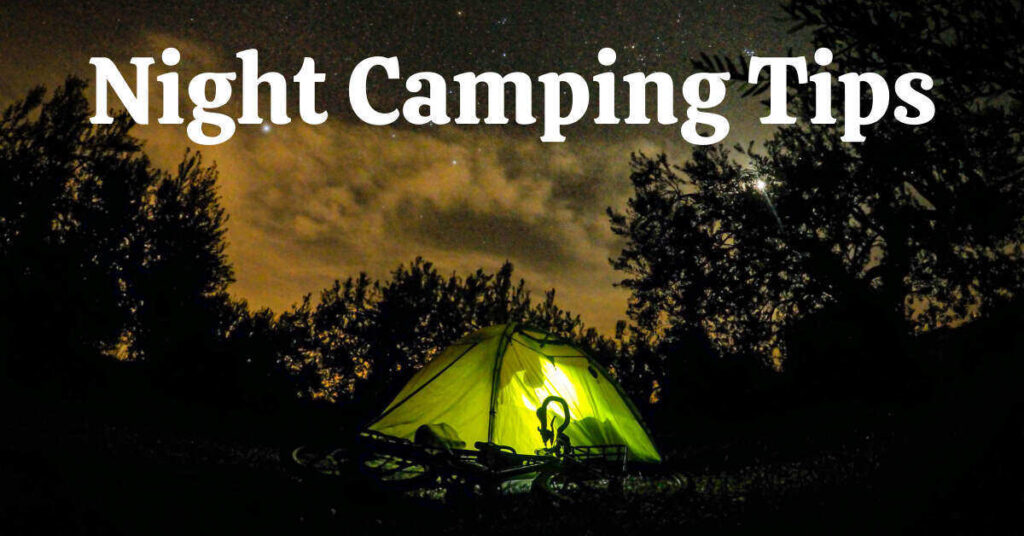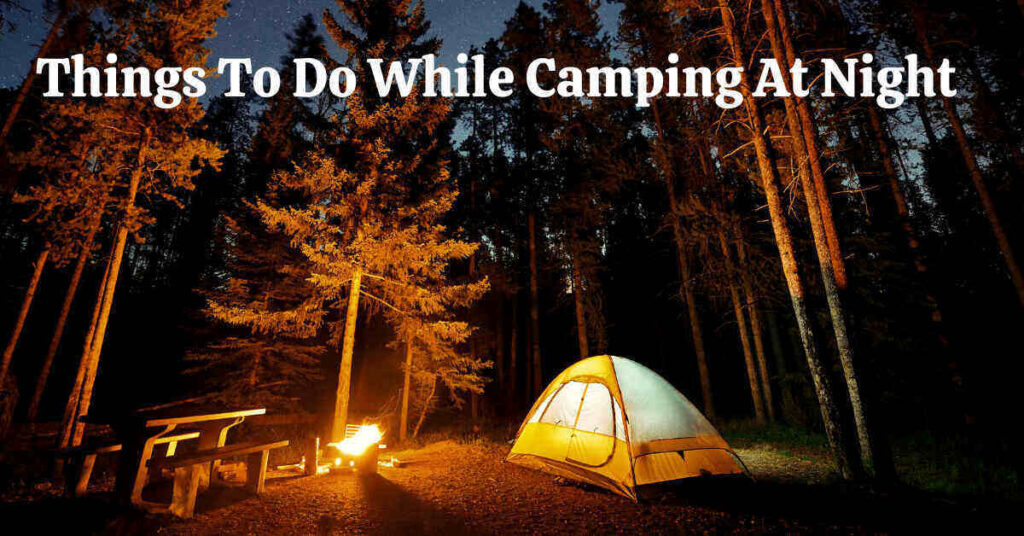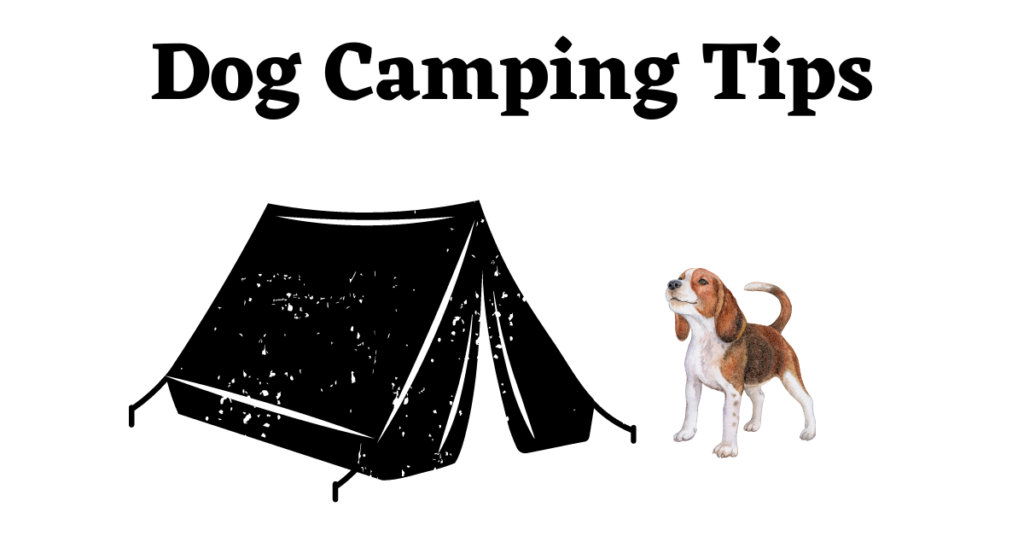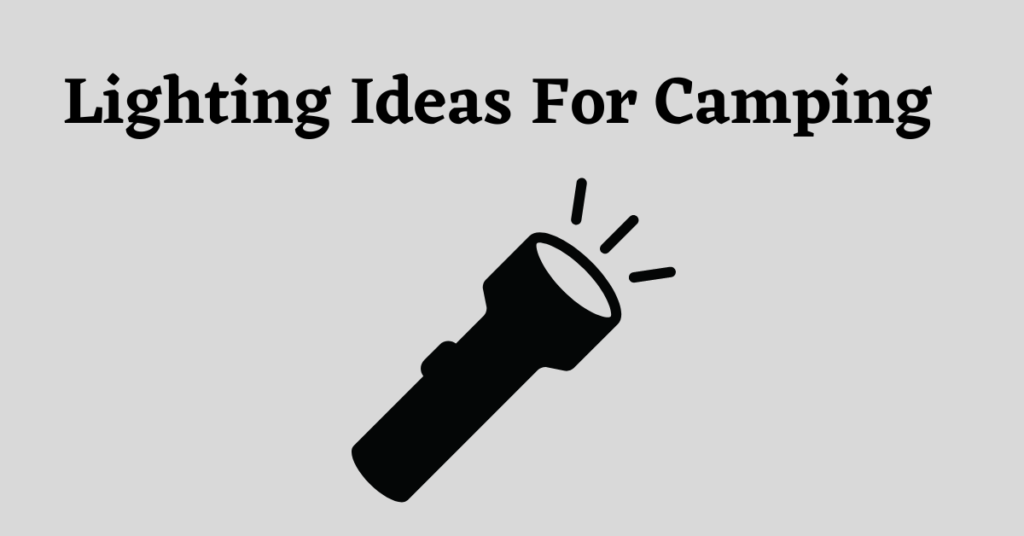Desert camping is like stepping onto another planet, where the relentless sunsets paint the sky in fiery hues and the serene dunes whisper ancient tales in the wind. But surviving and thriving in this arid wonderland demands more than just a sense of wonder. Here are 15 camping in the desert tips that will help you conquer the majestic desolation.
1. Research the area and climate before your trip
Before heading out on your camping trip, research the area and climate so you know what to expect. Find out about the temperature fluctuations and any potential hazards you might encounter. Knowing these details will help you plan accordingly and ensure a safe and enjoyable experience.
Researching the area will also give you insights into the local flora and fauna. You might discover unique desert plants and wildlife you wouldn’t want to miss. This knowledge will enhance your appreciation of the natural surroundings and allow you to connect with the environment on a deeper level.
2. Pack lightweight and breathable clothing
Make sure to pack lightweight and breathable clothing for your desert camping trip. This is because the desert can be scorching hot during the day and freezing cold at night. Opt for loose-fitting clothes made from breathable materials like cotton or linen.
These fabrics allow air to circulate and help keep your body cool. Avoid heavy materials like denim or wool, as they can trap heat and make you uncomfortable.
When it comes to footwear, choose a sturdy pair of hiking boots or closed-toe shoes that provide good ankle support. The desert terrain is usually rough and rocky, so protecting your feet from potential injuries is important.
3. Bring plenty of water and stay hydrated
To stay hydrated in the desert, don’t forget to bring plenty of water and drink it regularly throughout the day. Hydration is crucial in the desert heat, where dehydration can creep up on you unexpectedly. Remember that water is your lifeline in this arid environment.
Don’t skimp on water; having more than you need is better than running out in the middle of nowhere. Always carry a reusable water bottle or hydration pack with you, and sip on water throughout the day, even if you don’t feel thirsty.
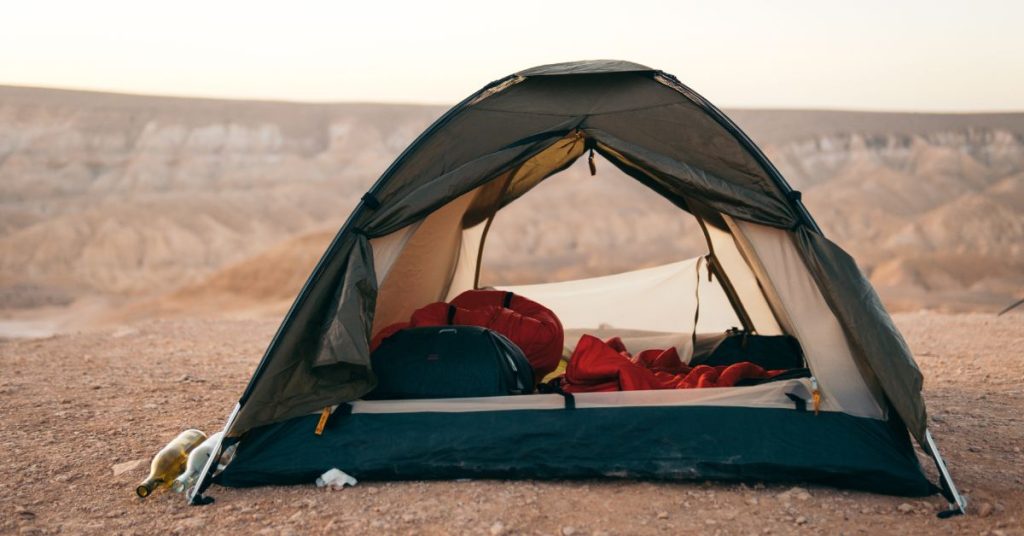
Remember, your body loses water through sweat, so you must stay proactive about rehydrating. Take regular breaks in shaded areas to rest and refill your water supply. If you plan on engaging in physical activities, like hiking or exploring, increase your water intake to compensate for the extra exertion. Listen to your body; if you start feeling lightheaded or fatigued, it’s a sign that you need to drink more water.
4. Protect yourself from the sun with sunscreen and a hat
Don’t forget to wear sunscreen and a hat to protect yourself from the sun. Make sure to choose a sunscreen with a high SPF, preferably 30 or above, to shield your skin from those harmful UV rays. And don’t forget to reapply every few hours, especially if you’re sweating or swimming.
Now, let’s talk about hats. Not just any hat will do for a desert excursion. You need a wide-brimmed hat that provides shade for your face, neck, and ears. This will not only protect you from the sun but also help keep you cool. Look for a hat made of lightweight, breathable material like straw or cotton.
5. Set up camp in a shaded area if possible
If possible, try to find a shaded area to set up camp and escape the scorching desert sun. Here are some tips to help you set up camp in the shade:
Look for natural shade: Seek out areas where rocks or trees can provide some relief from the sun’s rays. These natural shelters can make a huge difference in keeping you cool and comfortable.
Create your own shade: If you can’t find a shaded spot, don’t worry! Bring along a large tarp or umbrella to create your own shade. This will give you a respite from the scorching sun, allowing you to relax and enjoy your surroundings.
Time your activities: Plan your activities around the sun’s movements. Take advantage of the cooler mornings and evenings for hiking or exploring, and use the midday hours to rest in the shade. This way, you can avoid the peak heat and stay comfortable throughout your desert adventure.
6. Use a tent with good ventilation
Now that you’ve found a shaded spot to set up camp, let’s discuss the importance of using a tent with good ventilation. Trust me; this tip is crucial for your comfort and well-being in the desert.
A well-ventilated tent allows for proper airflow, preventing the inside from becoming stuffy and suffocating. A tent with mesh panels or windows will let in a breeze, keeping you cool and refreshed. It also helps to reduce condensation, so you won’t wake up to a damp and uncomfortable sleeping bag.
Furthermore, good ventilation is essential for your health. It helps to minimize the risk of heat-related illnesses and dehydration.
As you sleep, the fresh air circulating through your tent will ensure a good night’s rest, enabling you to wake up feeling rejuvenated and ready to conquer the day’s adventures.
7. Keep food sealed and protected from animals
Keep your food sealed and protected from animals to avoid attracting unwanted visitors to your campsite. The desert can be a haven for all sorts of critters, and you definitely don’t want them rummaging through your food supply.
To ensure a safe and enjoyable desert camping experience, follow these tips:
· Store your food in airtight containers
Ziplock bags, Tupperware, or metal canisters are all great options for keeping your food tightly sealed. This will not only prevent animals from smelling the delicious aromas but also protect your food from sand or dust that may blow around in the desert.
· Use bear-resistant containers
Even though you may not encounter bears in the desert, these containers are designed to keep all types of animals out. They are sturdy and can withstand the curious paws and sharp teeth of wildlife.
· Hang your food from a tree
If you’re camping in an area with trees, using a bear bag or bear-resistant hanging system is a smart move. By suspending your food high above the ground, you make it much harder for animals to access.
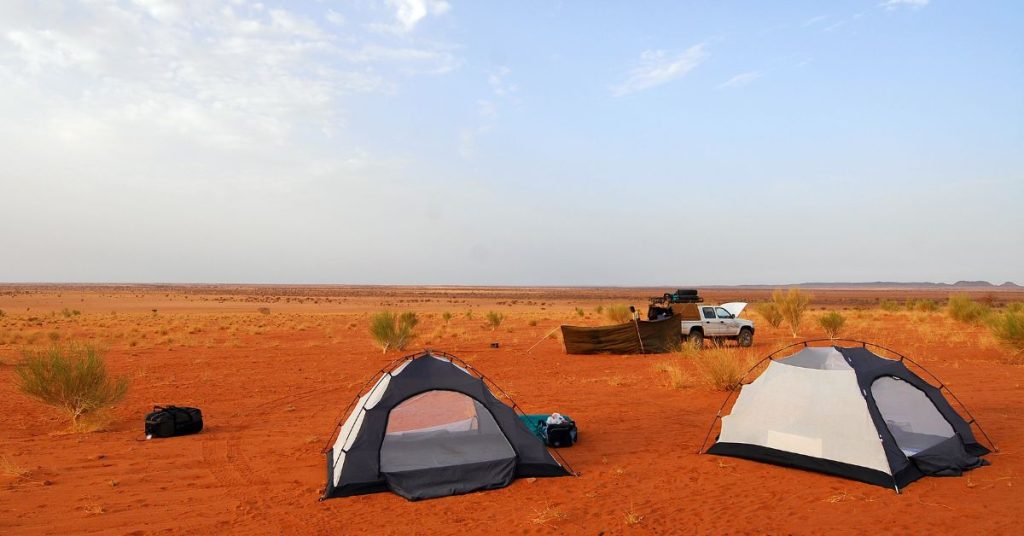
8. Watch out for snakes and other desert wildlife
The desert is a vast and beautiful place, but it can also be home to some dangerous creatures. As you venture into the desert, be aware of your surroundings and take precautions to stay safe.
Snakes are one of the most common wildlife you may encounter in the desert. While most snakes are not aggressive, it is still important to be cautious and give them their space.
Keep an eye out for their telltale signs, such as shed skin or tracks, and avoid tall grass or rocky areas where they may be hiding. If you come across a snake, remember to stay calm and slowly back away to give it room to retreat.
Other desert wildlife, such as scorpions and spiders, can also pose a threat. When setting up your campsite, check your sleeping bag, shoes, and any other items for these critters before use. Shake out your shoes and clothing, and inspect your bedding thoroughly.
9. Be mindful of flash floods and choose a safe campsite
The desert may seem dry and arid, but when rain does come, it can come fast and furious, turning dry riverbeds into raging torrents. To ensure your safety during your desert camping trip, keep the following tips in mind:
– Stay uphill: Find a campsite that is located on higher ground. This will help you avoid being caught in the path of a flash flood, as water tends to flow downhill.
– Avoid dry riverbeds: While they may look like an interesting camping spot, dry riverbeds can quickly fill up with water during a flash flood. It’s best to avoid these areas to prevent being trapped or swept away.
– Choose a well-drained area: Look for a campsite with good natural drainage. Avoid low-lying areas or places with signs of standing water, as these can indicate potential flood zones.
10. Pack a first aid kit and know basic desert survival skills
When you’re out in the vastness of the desert, it’s essential to be prepared for any unexpected situations that may arise. Firstly, make sure to pack a well-stocked first aid kit.
Include items like band-aids, antiseptic wipes, gauze, adhesive tape, pain relievers, and any necessary prescription medications. You never know when a small injury or illness might occur, and having these supplies on hand can make a world of difference.
Additionally, you need to know some basic desert survival skills. Learn how to navigate using the sun and stars, and familiarize yourself with the local flora and fauna.
Knowing which plants are safe to eat and which ones to avoid can be a lifesaver in an emergency situation. It’s also crucial to understand how to find and purify water, as dehydration can be a severe threat in the desert.
11. Plan activities during cooler parts of the day
To make the most of your desert camping experience, consider planning activities during the cooler parts of the day to avoid the intense heat.
Here are some activities to consider:
Sunrise Yoga: Start your day with a rejuvenating yoga session as the sun rises over the horizon. The cool morning breeze and serene desert landscape will enhance your practice and provide a sense of tranquility.
Hiking to Hidden Oases: Explore the desert’s hidden gems by hiking to secret oases. These refreshing havens offer a respite from the heat and an opportunity to discover the unique flora and fauna that thrive in desert environments.
Stargazing at Night: As the sun sets and the desert cools down, the sky becomes a canvas of twinkling stars. Lay back and marvel at the vastness of the universe.
12. Take breaks and rest in the shade
Resting in the shade is crucial during your desert camping trip to avoid heat exhaustion and stay refreshed.
Find a tree, set up a canopy, or even create your own shade using a tarp or umbrella. Take off your shoes, feel the coolness of the sand beneath your feet, and let the gentle breeze caress your skin.
This is your time to relax, recharge, and rejuvenate. Use this opportunity to hydrate yourself with some refreshing water or a cool beverage. Close your eyes, let go of any stress or worries, and just be in the present moment.
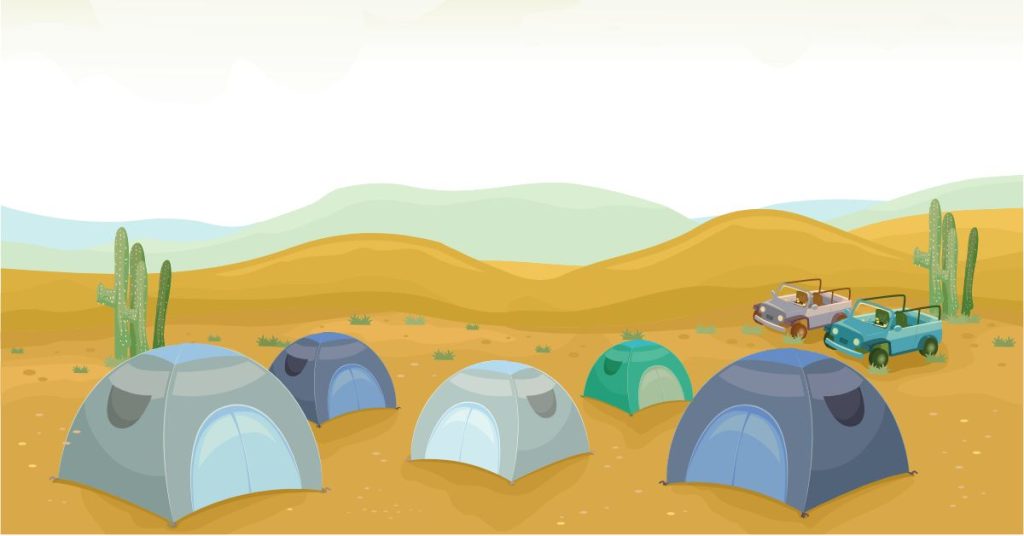
13. Be respectful of the environment and leave no trace
Remember to be mindful of the environment and leave no trace during your desert adventure. Here are a few tips to help you protect and preserve the environment:
- Pack out what you pack in: Ensure that you bring back all your trash and waste. Leave nothing behind except footprints.
- Stay on designated trails: By sticking to marked paths, you minimize your impact on fragile ecosystems and avoid disturbing the natural habitat of desert wildlife.
- Conserve water: The desert is a harsh environment, and water is a precious resource. Use it sparingly and avoid wasting any drops.
By being mindful of the environment and leaving no trace, you contribute to the preservation of the desert’s unique ecosystem for future generations to enjoy.
14. Bring a map and compass for navigation
When you venture into the vast desert landscape, it’s easy to lose your way among the endless dunes and rocky terrain. But fear not, for a map and compass will be your guiding light.
Before embarking on your desert adventure, have a detailed map of the area. Familiarize yourself with the landmarks, trails, and any potential hazards that may lie ahead. A compass will help you stay on course and ensure you’re going in the right direction.
Remember, relying solely on technology like GPS systems can be risky in the desert, where signals can be unreliable. That’s why having a good old-fashioned map and compass as a backup is crucial for your safety.
Take the time to learn how to use a compass properly. Master the art of reading the map and orienting yourself based on the compass’s needle. By honing these skills, you’ll have the confidence to explore the desert and navigate your way through its enchanting wonders.
15. Check weather conditions
Regularly check the weather conditions and be prepared for sudden changes when camping in the desert.
Here are some tips to help you stay prepared:
– Pack appropriate clothing: Desert temperatures can vary greatly between day and night, so bring layers that you can easily add or remove. Don’t forget a hat and sunglasses to protect yourself from the intense sun.
– Be prepared for sandstorms: Desert winds can kick up unexpectedly and create intense sandstorms. Bring a sturdy tent and secure it properly to withstand these conditions. Have goggles and a bandana to protect your eyes and face from blowing sand.
Now that you know these camping in the desert tips, you’re ready to embark on your desert adventure. Remember to research, pack wisely, and stay hydrated. Protect yourself from the sun and find shade when you can, and be respectful of the environment. With these desert camping tips in mind, you’ll have an amazing and safe camping experience!

